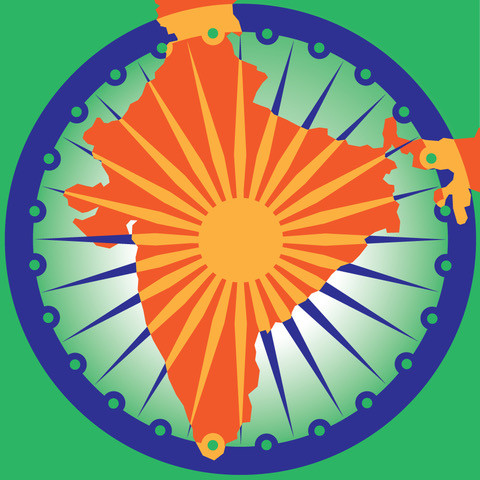
Water plays an important role in Indian culture. Nevertheless, many of the country’s most sacred rivers—such as the Ganges, Yamuna, and Godavari—are heavily polluted from factory waste, agricultural runoff, and untreated sewage. Much of India lacks basic water and sanitation infrastructure, forcing tens of millions of Indians to forage daily for water and toilets. NGOs, the government, and business are making progress, but much remains to be done. Cleveland, Ohio-based Michael McElroy became interested in the issue after traveling to the country in 2010 on a photo assignment. “My attention quickly shifted when I saw water sources drying up, water pollution, and the struggle people went through every day to get clean water,” says McElroy. He returned to India in 2011 and 2012 to take these photographs. McElroy’s work has been published in The New York Times, Stern, Mother Jones, The Wall Street Journal, and Time.
 A man takes a bath from a water pipe at a park bordering the Yamuna River in Delhi.
A man takes a bath from a water pipe at a park bordering the Yamuna River in Delhi.
 A vendor for the Bhai Daya Singh Charitable Trust provides water to people living on the streets of Delhi.
A vendor for the Bhai Daya Singh Charitable Trust provides water to people living on the streets of Delhi.
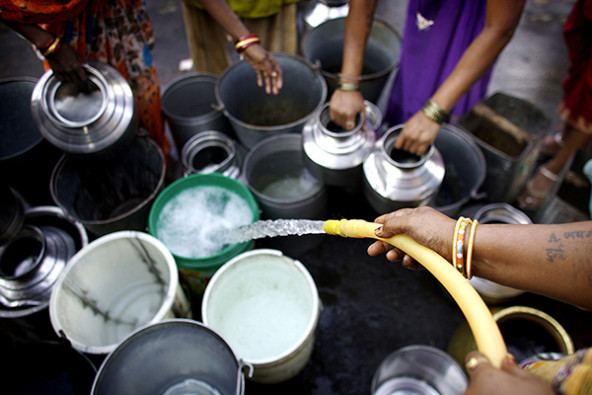 A woman from the Vidarbha region shares her well water with villagers whose wells have run dry.
A woman from the Vidarbha region shares her well water with villagers whose wells have run dry.
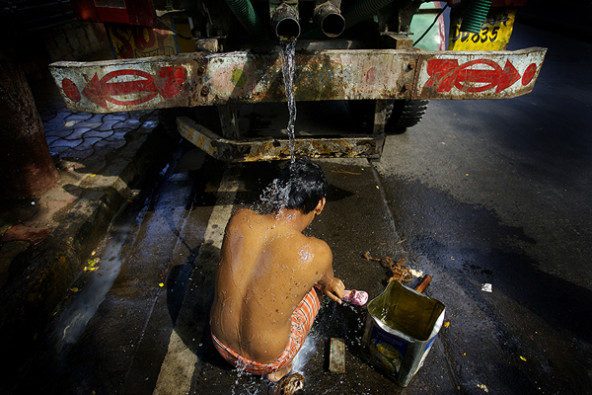 A man uses water left over from a tanker truck to take a bath on the streets of Mumbai.
A man uses water left over from a tanker truck to take a bath on the streets of Mumbai.
 Residents of the Sewri slum in Mumbai fill containers from an illegally tapped water line. (Photographs by Michael McElroy)
Residents of the Sewri slum in Mumbai fill containers from an illegally tapped water line. (Photographs by Michael McElroy)
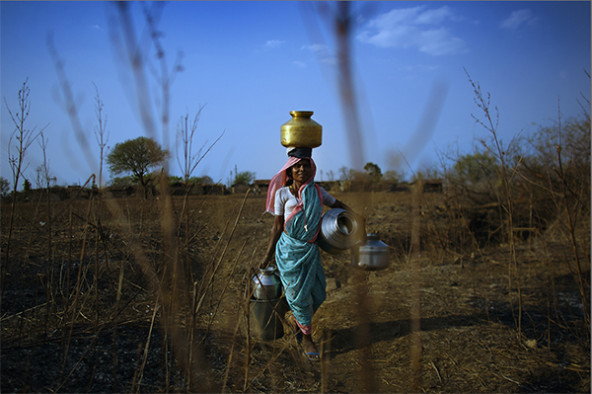 A woman from the Vidarbha region carries containers to collect and transport water.
A woman from the Vidarbha region carries containers to collect and transport water.
 A farmer outside Kanpur suffers from hypopigmentation, a result of high levels of arsenic in the water.
A farmer outside Kanpur suffers from hypopigmentation, a result of high levels of arsenic in the water.
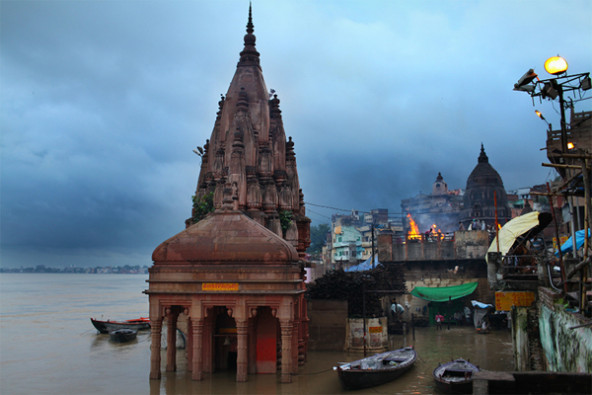 A fire glows on a ghat beside the Ganges River in Varanasi, one of the world’s oldest cities.
A fire glows on a ghat beside the Ganges River in Varanasi, one of the world’s oldest cities.
 An ice vendor makes deliveries to waiting shop owners in the crowded Dharavi slum in Mumbai.
An ice vendor makes deliveries to waiting shop owners in the crowded Dharavi slum in Mumbai.
Support SSIR’s coverage of cross-sector solutions to global challenges.
Help us further the reach of innovative ideas. Donate today.
Read more stories by Eric Nee.

